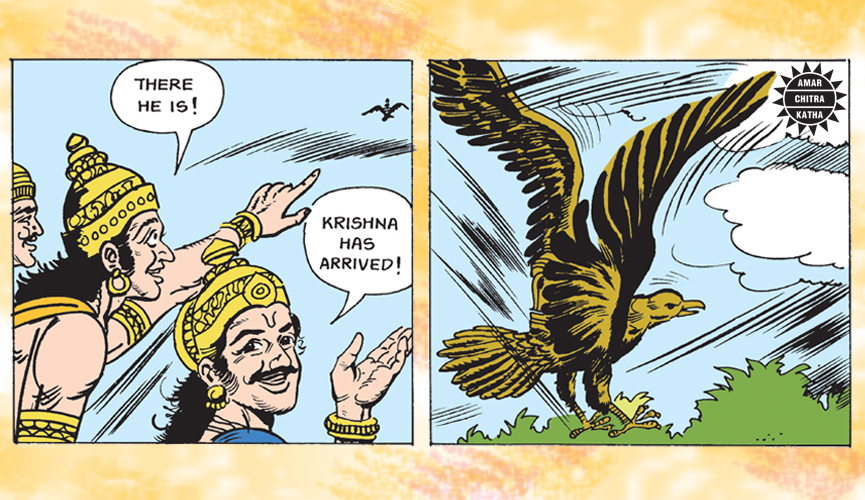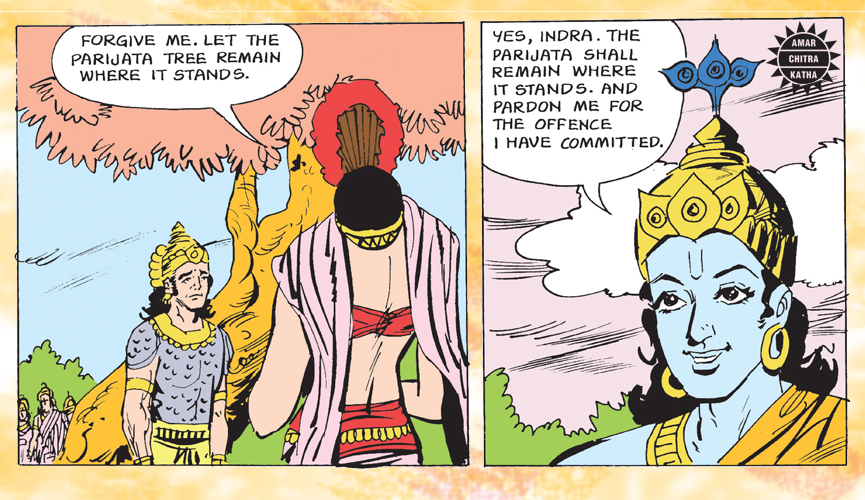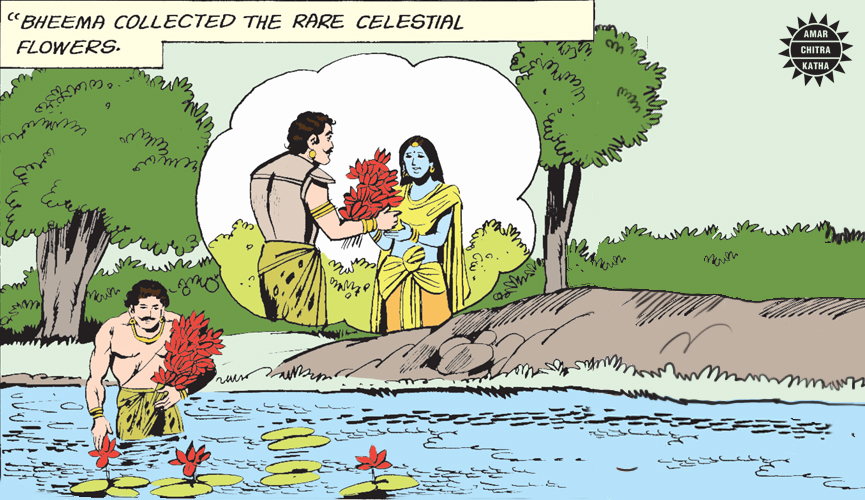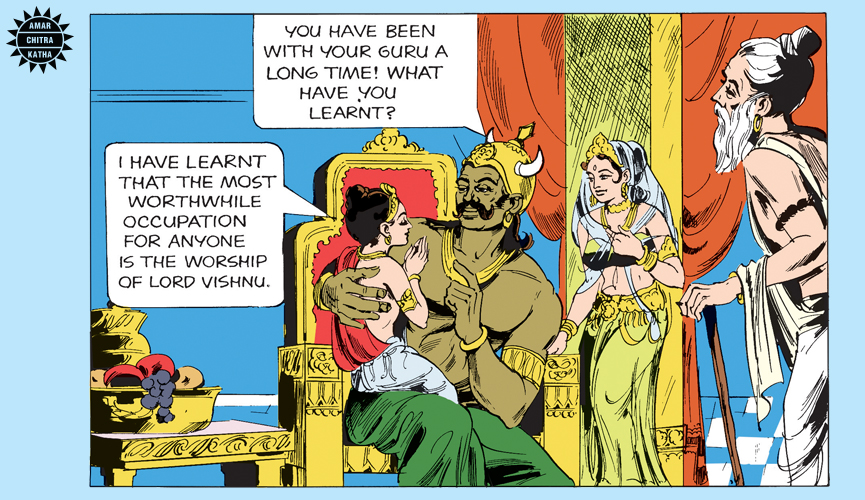By Srinidhi Murthy
The Parijata tree emerged as one of the divine valuables during Samudra Manthan (the churning of the ocean). The celestial tree bore beautiful white flowers and had a divine fragrance. This tree was placed in Indra’s heavenly abode. Read the story of how Indra and Krishna fought for its possession.
Aditi’s earrings

Narakasura was a vicious asura who took pleasure in terrorising the inhabitants of all three worlds. He invaded heaven and drove Indra out of his abode. The asura also snatched Aditi’s earrings during one of these attacks. Indra approached Krishna for his help in defeating the evil asura. Krishna, along with his wife Satyabhama, rode on Garuda to confront Narakasura in his capital Pragjyotisha. After a fierce battle, he finally defeated Narakasura, with Satyabhama at his side.
Satyabhama’s disappointment

After killing Narakasura, Krishna and Satyabhama visited heaven to return Aditi’s earrings. Indra welcomed them and thanked Krishna for killing Narakasura for him. Satyabhama, who had fought the asura with Krishna, felt slighted as she was ignored by Indra. She was also affected by the fact that Indra’s wife Shachi, did not arrive with him to welcome her. When Shachi arrived to take the couple to Aditi, Satyabhama noticed that both Shachi and Aditi ignored her contribution to Narakasura’s defeat and gave their full attention to Krishna. Though disappointed, Satyabhama ignored the slight and prepared herself to return to Dwaraka with Krishna.
Visiting Nandana
Seated on Garuda, Krishna and Satyabhama started their journey to Dwaraka. On their way, they landed at Nandana, Indra’s garden, to spend some time there. Satyabhama was impressed with the divine Parijata tree and decided to take the tree to Dwaraka. Suddenly, one of the guards approached them and prohibited both Krishna and Satyabhama from taking the tree as it belonged to Shachi. He added that taking the Parijata tree would infuriate Indra. Satyabhama was angry. She announced that nothing could stop Krishna, the slayer of Narakasura, from taking the tree. Terrified, the guard ran to Shachi, to report to Satyabhama.
Fight for the Parijata tree
Angered by Satyabhama’s words, Shachi asked Indra to stop them. Indra marched to Nandana with his army. When Krishna and Satyabhama noticed the arrival of Indra with his army, they realised that he meant to fight them for the Parijata tree. Soon, a fight ensued between Krishna and Indra’s army. Krishna cut down their arrows faster than they were shot. Even Yama and Indra himself were no match for Krishna. Meanwhile, Garuda attacked Indra’s mount Airavata. The run of the startled elephant caused chaos in the celestial army and the army began to flee. Indra himself was all set to flee, but Krishna asked him to stop.
Happy ending

Satyabhama said that since Indra was the Lord of the Celestials, he should not suffer humiliation. She then added that she started this fight to teach a lesson to Shachi as she deliberately ignored her part in the battle with Narakasura. Both Satyabhama and Krishna apologised to Indra and asked him to let the tree remain where it stood. Indra also apologised to the couple for fighting. He requested them to take Parijata to Dwaraka, as a symbol of their forgiveness. Krishna and Satyabhama flew to Dwarka on Garuda, carrying the celestial tree with them.
Read the comic book of the Prajita Tree by Amar Chitra Katha on the ACK Comics App, Kindle, Amazon, and more.













































